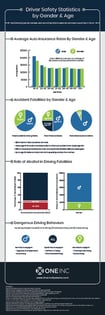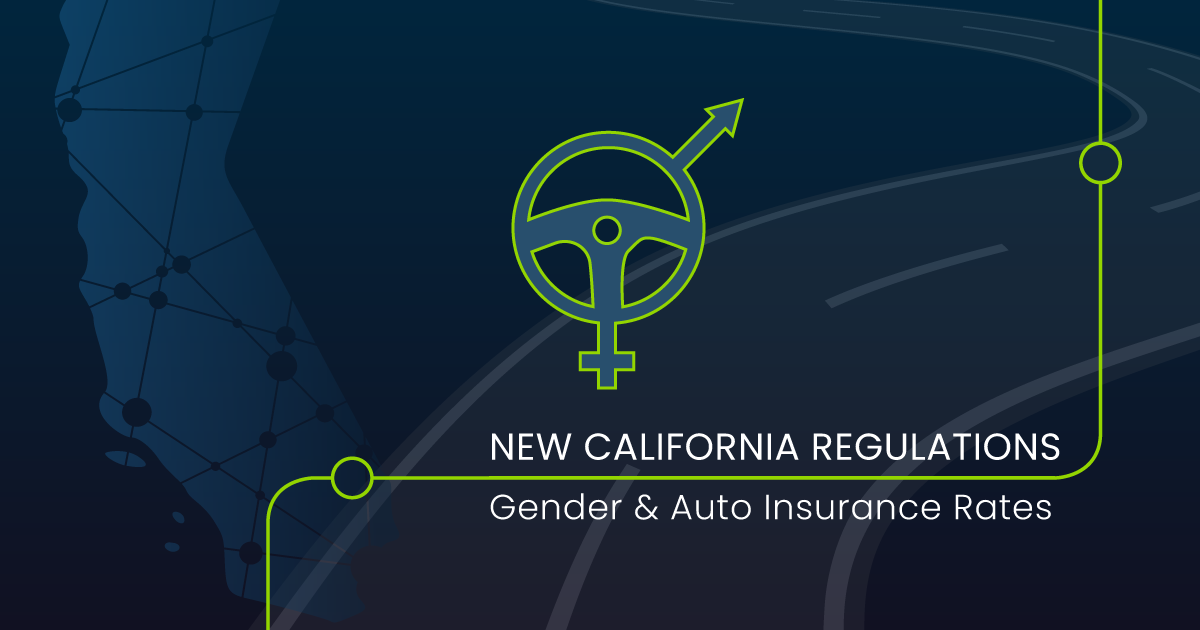California has joined a growing number of states moving towards gender equality in personal auto insurance. Effective January 1, 2019, insurers can no longer include gender – whether as a stand-alone factor or in combination with any other factor – when calculating rates for private passenger automobile insurance policies.
“My priority as Insurance Commissioner is to protect all California consumers,” said California Insurance Commissioner Dave Jones, “and these regulations ensure that auto insurance rates are based on factors within a driver’s control, rather than personal characteristics over which drivers have no control.”
 Gender and Auto Insurance
Gender and Auto Insurance

Up until now, gender — usually in combination with age — has played a fairly significant role in auto insurance rates. According to research conducted by Finder.com, men pay approximately 3% more than women for auto insurance over the course of a lifetime, with the bulk of the discrepancy taking place in adolescence and early adulthood.
Teenage males pay an average of 17% more than their female counterparts, with the delta dipping slightly to 14% through their mid-20s. After that point, women generally pay about 5% more than men over the next few decades of driving. Rates begin to even out around age 60.
Whereas the stats indicate an elevated risk for male drivers – particularly in their younger years – the reasons for charging higher premiums to women are less clear to researchers, as there does not seem to be a documented increase in risk for female drivers.
Regardless of differences in statistical risk, consumer advocates have long argued against gender-based insurance rating, asserting that gender, not unlike race, is beyond an individual’s control and therefore should not be included in determining rates and premiums.

Related California Insurance Regulations
This isn’t the first time California has taken a stand against gender discrimination in insurance. In 2009, Assembly Bill 119 ("AB 119") banned the common practice of charging different health insurance rates for men and women. Then in 2012, regulations were expanded to prevent gender-based denials of coverage and claims in medical insurance.
Alongside the new Gender Non-Discrimination in Automobile Insurance Rating Regulation, Senate Bill 179 ("SB 179") also took effect January 1, 2019, allowing California residents to self-certify their identity as male, female, or nonbinary. All gender identities are protected under the new auto insurance regulation, which amends Title 10 of the California Code of Regulations ("CCR 10"), sections 2632.5 and 2632.11, officially removing gender as a rating factor in personal auto policies.
 What to Tell Your Policyholders
What to Tell Your Policyholders
Your policyholders will probably have questions about the new regulations. Teenage boys (or their parents) may want to know when they can expect their rates to drop, and teenage girls (or their parents) might wonder if they should expect their premiums to go up. Men and women of all ages will likely be curious how the new regulations will affect their policies, and ultimately, their budgets.
The fact remains, we may not have all the answers until the dust has settled – after the new class plans have been filed, approved, and implemented.
However, you still want to keep your policyholders in the loop. If they feel they can't get the information they need from you, they might start looking to another company for answers. At a minimum, have a list of responses available for your agents and staff to reference, as well as a standard reply for unanticipated inquiries. Most customers will appreciate the transparency, even if you simply say, “That's a great question, and I understand your concern. Unfortunately, we don’t have an answer yet, but I will definitely let you know just as soon as we know.” And then, of course, follow through.
To get ahead of the wave – and save your team from having to deal with an influx of frenzied messages – consider sending an email to all your policyholders to inform them of the new regulation. Encourage communication and reassure any concerns with empathy and honesty.
 Next Steps
Next Steps
According to the new regulation copy, insurers have until July 1, 2019 to file their revised class plans – including both a completed class plan application (form prescribed by the Commissioner) and underwriting guidelines – for each private passenger auto insurance program. The Insurance Commissioner will approve or reject the plan within 90 days of the date the application is received. If denied, the insurer carries the burden of proof that the plan complies with all regulations, and he or she must request a hearing within 30 days of the rejection-date.
Read the full text for a complete description of what should be included in your new class plan, as well as other details.
Be sure to check with the California Insurance Commissioner's Office for the latest information on the application process, including any forms you need to file. And as always, consult your legal counsel for advice and guidance.
Disclaimer: The information provided in this article is intended for educational purposes only. Please consult an attorney to discuss laws, regulations, statutes, and compliance requirements in your state, including California..

